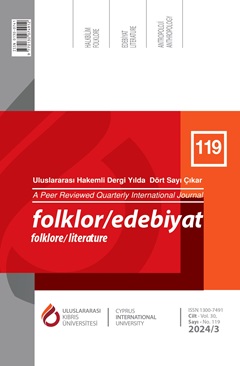Sultantepe’den Gılgameş ile İlgili Bir Kurgu Mektup
A Fictional Letter about Gilgamesh from Sultantepe
Author(s): Kurtuluş KıymetSubject(s): Cultural history, Studies of Literature, Ancient World, Philology
Published by: Uluslararası Kıbrıs Üniversitesi
Keywords: Gilgamesh; cuneiform; Ancient Mesopotamia; fictional letters; Sultantepe;
Summary/Abstract: In this article, an example of the genre of “fictional letters”, which is part of ancient Mesopotamian literature, is discussed. This genre is called fictional or fictitious because these letters were written long after the periods they refer to, and their content is almost entirely made up. Among the most prominent characteristics of “fictional letters” are the following: they are written by young clerks as part of their training, and they often feature well-known kings or heroes from Mesopotamian history, such as Gilgamesh and Sargon. These kings or heroes demand very high tribute from their rivals. “The fictional letter” known as the Gilgamesh Letter, which is analyzed in this article, fits the characteristics described above and was found at Sultantepe (Ancient Huzirina) in Şanlıurfa. Written in the Late Assyrian dialect and cuneiform script, the document dates to the 7th century BC (Late Assyrian Period). Although the letter takes Gilgamesh as its subject, it has different characteristics from the well-known Gilgamesh Epic in world literary history, but it is partially related to it. In analyzing the document, the main features of the fictional letter genre are first explained, and other similar examples are given. After providing a translation, the text is explained by comparing it with other “fictional letters” and the Gilgamesh Epic, emphasizing its connection with the Epic. Finally, the main reason for writing such a text is explored. As a result of the research, I reached the following findings: The Sultantepe Gilgamesh Letter is the only example, in Anatolia, of the “fictional royal letter” and is a criticism against the Assyrian kingship ideology under the guise of Gilgamesh.
Journal: Folklor/Edebiyat
- Issue Year: 30/2024
- Issue No: 119
- Page Range: 589-606
- Page Count: 18
- Language: Turkish

